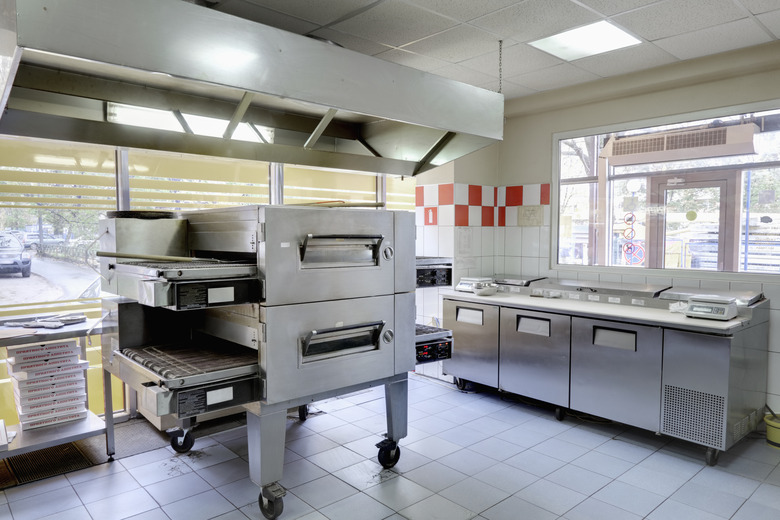What Is An Impingement Oven?
We may receive a commission on purchases made from links.
Have you ever wondered how industrial-scale food preparation facilities manage to bake or cook food quickly, thoroughly and consistently? Commercial or industrial kitchens typically use an impingement oven to reduce cook time and scale up production. An impingement oven is a type of convection oven that not only circulates hot air around the food, but does so with force to penetrate the cold air "bubble" that often surrounds the food.
Tip
An impingement oven forces jets of hot air toward food in order to decrease the cooking time in commercial kitchens.
How an Impingement Oven Works
How an Impingement Oven Works
Food takes a while to heat up when exposed to surface transfer heating (radiant) or convection heating (hot circulated air) because a bubble or "halo" of cold air lingers directly above the food after it enters the oven. Radiant and convection heating methods gently heat this cool air until it dissipates, allowing the top of the food to heat up as well.
An impingement oven casts aside the "gentle" aspect and blasts the cold barrier aside via jets of hot air. With the cool halo no longer preventing the top of the food from being heated, the food can cook faster. According to impingement oven manufacturer Lincoln, this technology can decrease cooking time by 30 to 35 percent.
Advantages of Impingement Ovens
Advantages of Impingement Ovens
In a commercial kitchen, the faster cooking time can translate directly into faster service and happier customers. In an industrial production setting, faster cooking times allow for even more food to be made in a single day, as the cook time no longer acts as a bottleneck restricting the scale of production. Because the food spends less time exposed to heat, less moisture is lost with impingement heating, resulting in arguably better flavor and texture.
Impingement ovens also offer some of the same benefits of commercial convection ovens. For example, they use a conveyor belt to move food through the oven for a precise amount of time. When the cook time is complete, the food exits the oven automatically, reducing the need for direct oversight from busy kitchen staff and preventing food from burning. With some coordination and pre-planning to obtain the appropriate cook times, you can also cook different items side by side in the same oven, to save time and space.
Disadvantages of Impingement Ovens
Disadvantages of Impingement Ovens
Using an impingement oven requires some trial and error in order to adjust the air nozzles, which are also called fingers. These nozzles sit above and below the conveyor belt and can produce different results based on their distance from the food and the strength of the air flow, as well as other factors.
It's also important to consider the temperature of the oven and the nature of the food being cooked. For example, baked goods may need to spend more time in the oven in order for chemical reactions like leavening, sugar dissolution and protein denaturation to occur. An impingement oven may not always be the most effective solution if texture and flavor are sacrificed.
Finally, given the need to adjust the impingement oven's nozzle settings to obtain the best outcome for each type of food, commercial kitchens may find it necessary to have a dedicated oven for certain items on the menu. This can represent a costly investment, but most impingement ovens are stackable to save space, if having multiple ovens seems like a viable solution for your business.
